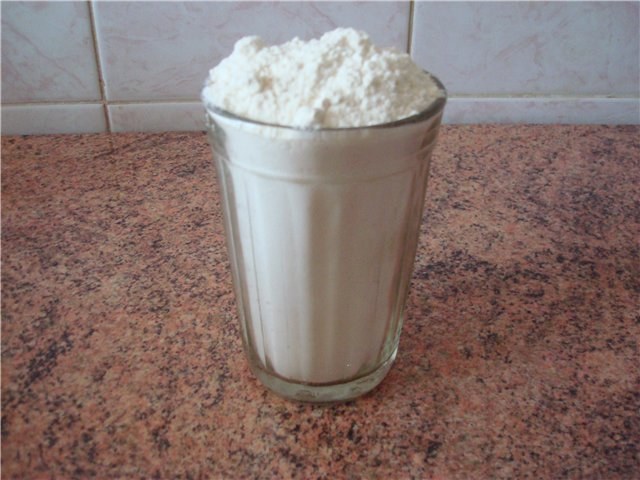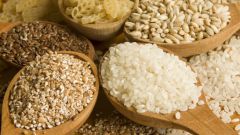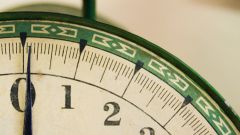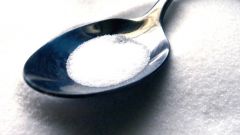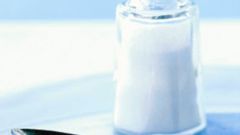Flour in cooking quite often measure cups: this method measure out the desired quantity of products can be found in many recipes. However, it is sometimes necessary to translate this rather convenient unit of measurement in the more traditional - for example, pounds.
In cooking for measuring the right amount of product in the majority cases, not all, but a very specific kind of glass, faceted glass, familiar to many Housewives from the Soviet times. This glass has a particular characteristic: its main part is a faceted cylinder slightly truncated shape, and the upper part is made in the form of a smooth rim. The line between faceted and smooth part of the glass, often called valium.
While in cooking, there are two main options for the filling of cut glass: to the top to risks. This applies to the wide variety of products, the number of which is generally measured in cups, and also applies to flour. It is obvious that the weight of the finished product in the filled glass will depend on the method of its filling. So, a Cup of flour filled to the risks, will contain about 130 grams of product as a glass filled to the top - 150 grams.
In turn, in order to understand how many cups of flour forms one kilogram of this product, you need to understand what method of filling the Cup in question in this case. So, culinary recipes usually specify whether to fill the glass up to the risks or to the brim. If no such reference is made, in a large part of the cases we are talking about filling a glass to the risks.
Thus, in various cases, the number of cups of flour, forming a kilogram of product will vary. However, simple arithmetic shows that in both situations, the pounds will be a non-integer number of glasses. So, if you measure the number of cups of flour filled to the risks that are necessary in order to obtain a kilo of flour, it can be done on the basis of simple calculations: 1 kilogram / 130 grams = 1000 grams / 130 grams = 7.69 glass. Thus, in order to obtain a kilo of flour with cups filled to the risk would require seven full glasses and another filled about 3/4 full.
With regard to poured to top of glasses, here you must substitute in the above equality, the corresponding figures: 1 kilogram / 150 grams = 1000 grams / 150 grams = 6.67 glass. Therefore, a kilo of flour form 6 full glasses and one, which contains about 3/4 of the product.
A Cup of flour
In cooking for measuring the right amount of product in the majority cases, not all, but a very specific kind of glass, faceted glass, familiar to many Housewives from the Soviet times. This glass has a particular characteristic: its main part is a faceted cylinder slightly truncated shape, and the upper part is made in the form of a smooth rim. The line between faceted and smooth part of the glass, often called valium.
While in cooking, there are two main options for the filling of cut glass: to the top to risks. This applies to the wide variety of products, the number of which is generally measured in cups, and also applies to flour. It is obvious that the weight of the finished product in the filled glass will depend on the method of its filling. So, a Cup of flour filled to the risks, will contain about 130 grams of product as a glass filled to the top - 150 grams.
A kilo of flour
In turn, in order to understand how many cups of flour forms one kilogram of this product, you need to understand what method of filling the Cup in question in this case. So, culinary recipes usually specify whether to fill the glass up to the risks or to the brim. If no such reference is made, in a large part of the cases we are talking about filling a glass to the risks.
Thus, in various cases, the number of cups of flour, forming a kilogram of product will vary. However, simple arithmetic shows that in both situations, the pounds will be a non-integer number of glasses. So, if you measure the number of cups of flour filled to the risks that are necessary in order to obtain a kilo of flour, it can be done on the basis of simple calculations: 1 kilogram / 130 grams = 1000 grams / 130 grams = 7.69 glass. Thus, in order to obtain a kilo of flour with cups filled to the risk would require seven full glasses and another filled about 3/4 full.
With regard to poured to top of glasses, here you must substitute in the above equality, the corresponding figures: 1 kilogram / 150 grams = 1000 grams / 150 grams = 6.67 glass. Therefore, a kilo of flour form 6 full glasses and one, which contains about 3/4 of the product.
